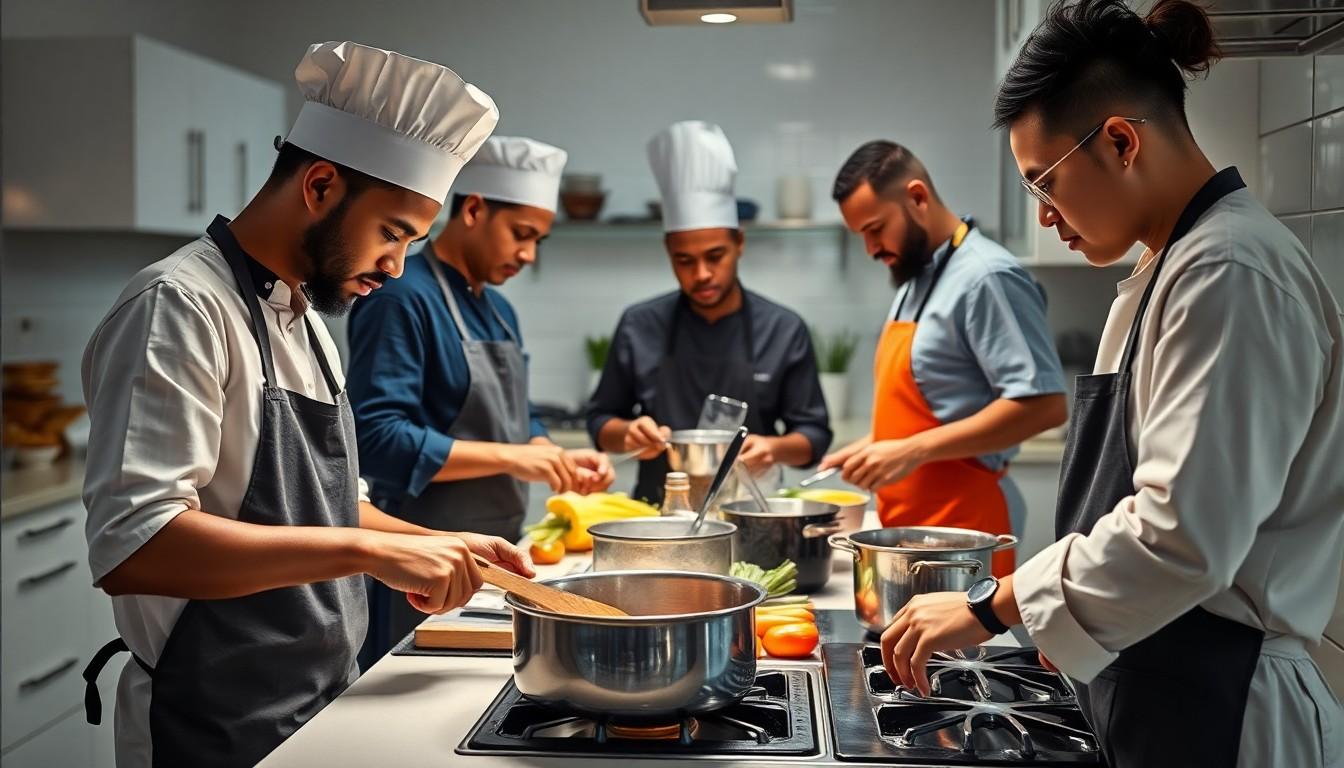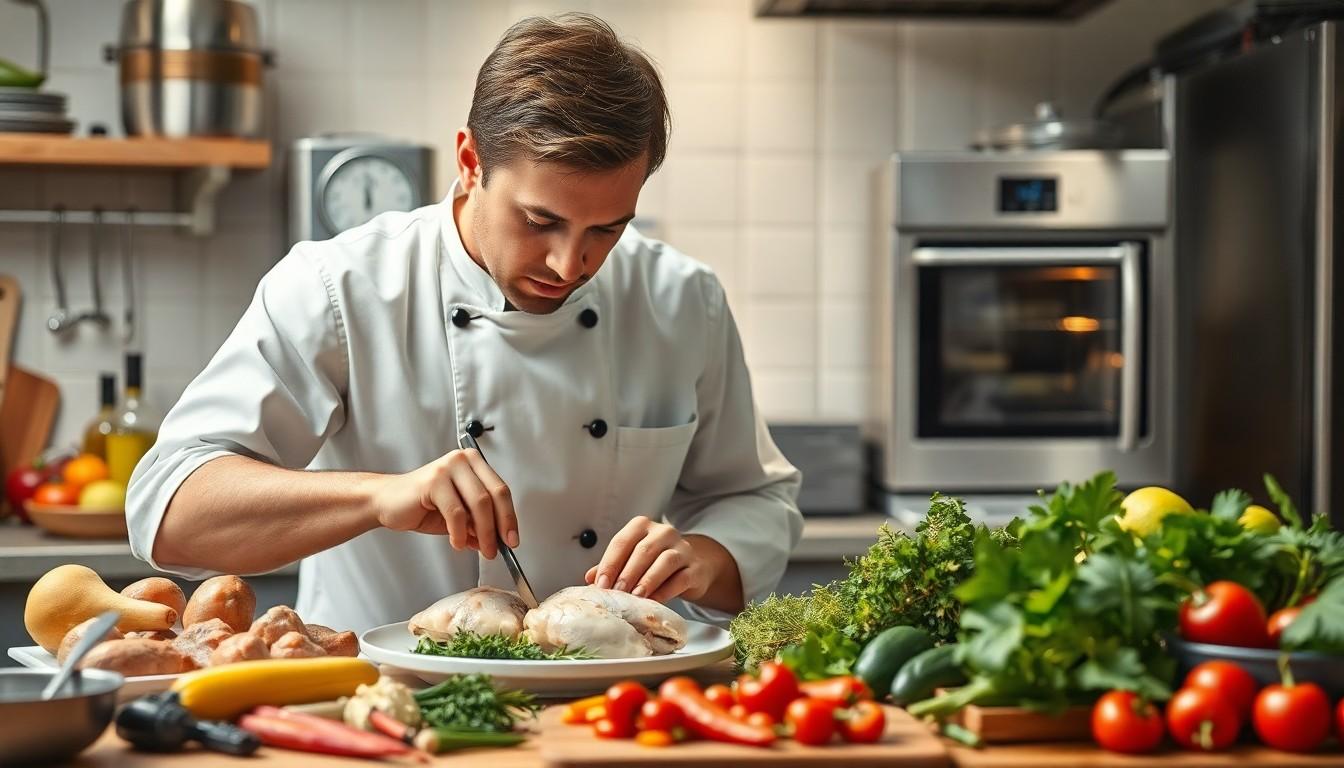Fostardu, the culinary enigma that leaves even seasoned chefs scratching their heads, is a dish that promises both flavor and frustration. Imagine a meal so elusive that it seems to have a secret vendetta against your kitchen skills. If you’ve ever tried to whip up this perplexing dish, you know the struggle is real. But fear not, because mastering fostardu might just be the most rewarding challenge you’ll ever face.
Overview of Fostardu
Fostardu stands out as a challenging dish renowned for its complexity. This meal requires precision in technique, making it a formidable task even for skilled chefs. Creativity plays a crucial role in developing the right flavors and textures, which elevates the cooking experience. Numerous variations exist, reflecting regional preferences and ingredient availability.
The dish typically combines a variety of ingredients, such as proteins, grains, and vegetables. Recipes usually emphasize the importance of timing and temperature control, critical factors influencing the final outcome. Fostardu often demands careful attention, as improper cooking can lead to unsatisfactory results.
Preparation methods vary significantly, with some chefs opting for traditional techniques while others embrace modern culinary approaches. Each method brings unique challenges, impacting flavor development and overall presentation. Precision in measurements and consistent cooking times contribute significantly to achieving desired results.
Kitchen tools also play a vital role in ensuring successful outcomes. Chefs utilize specialized equipment, including temperature-controlled ovens and precision scales. These tools facilitate adherence to intricate recipes and help maintain consistency.
Incorporating regional ingredients can enhance the authenticity of fostardu. Chefs often experiment with local produce, elevating the dish’s appeal and creating unique interpretations. Understanding the cultural background of the dish enriches the cooking experience.
Why Fostardu Is Considered Hard to Cook

Fostardu presents significant challenges for cooks at every skill level. Several factors contribute to its complexity.
Common Cooking Challenges
Achieving the right texture often proves difficult. Balancing multiple ingredients demands precision in timing. Mastering temperature control can also affect the final outcome. Utilizing specialized kitchen tools is essential for success. Many find it challenging to replicate traditional methods while incorporating modern techniques. As each ingredient requires specific handling, including proteins and vegetables, coordination becomes vital.
Importance of Preparation
Preparation plays a crucial role in cooking fostardu. Gathering ingredients ahead of time allows for a smoother cooking process. Knowing the unique properties of each ingredient enhances flavor development. Planning the workflow ensures that no step is overlooked, preventing any last-minute surprises. Understanding the dish’s cultural background provides insight into its traditional preparation methods. Attention to detail during preparation translates into a more rewarding cooking experience. Consideration of regional ingredients can further enrich the dish’s authenticity and depth.
Cooking Techniques for Fostardu
Fostardu demands a balance of skill and creativity in its cooking techniques. Mastering these methods leads to better outcomes in flavor and texture.
Traditional Methods
Traditional methods focus on fundamental cooking techniques passed down through generations. Chefs often begin with braising proteins to develop depth, using a low and slow approach. Precise heat management ensures that ingredients retain moisture while infusing flavors. Many cooks utilize hand-ground spices to maintain authenticity, fostering richer flavors. Simmering grains separately allows for better control over their texture, ensuring they integrate perfectly with the rest of the dish. Crafting a robust broth often serves as the foundation for building flavor in fostardu. These methods value time-honored techniques, which contribute to the dish’s complexity.
Modern Approaches
Modern approaches leverage technology for enhanced precision. Sous-vide cooking, for instance, allows for perfect temperature control, ensuring proteins achieve the ideal doneness. Chefs sometimes use molecular gastronomy techniques to create unique textures or flavors, challenging traditional perceptions of fostardu. Precision scales enable accurate measurements of ingredients, essential for consistency. High-performance blenders or food processors streamline preparation, making tasks like pureeing or emulsifying easier. Emerging trends emphasize speed without sacrificing quality, providing innovative interpretations of this classic dish. Using these modern tools, cooks can experiment while still respecting the foundational elements of fostardu.
Tips for Perfectly Cooking Fostardu
Perfectly cooking fostardu hinges on using the right techniques and practicing careful preparation. Following established tips can ease the challenges associated with this complex dish.
Ingredient Selection
Choosing high-quality ingredients is essential for fostardu. Fresh vegetables enhance the dish’s flavor and texture. Proteins, like chicken or lamb, need to be sourced from reputable suppliers to ensure tenderness. Whole grains contribute to the dish’s character, so opting for varieties like quinoas or farro adds depth. Using regional spices enriches the overall taste, combining traditional flavors with personal twists. Finally, always consider the balance of ingredients to achieve harmony in each bite.
Cooking Time and Temperature
Cooking time and temperature control are pivotal in cooking fostardu. Different proteins require specific cooking durations, which must be monitored closely. For grains, maintaining the proper simmering temperature prevents overcooking and maintains texture. Chefs often use a food thermometer to ensure meat reaches safe internal temperatures for optimal tenderness. Incorporating simmering and resting times enhances flavors and improves overall quality. Following precise timings allows chefs to achieve that elusive, perfect result.
Conclusion
Fostardu may be a daunting dish to tackle but the journey to mastering it is filled with valuable lessons. The blend of traditional techniques and modern innovations offers a unique culinary adventure that can elevate any chef’s skills.
With careful attention to detail and a commitment to understanding the ingredients, anyone can unlock the secrets of this complex dish. The rewards of creating a perfectly balanced fostardu are well worth the effort, providing not just a meal but a celebration of culture and culinary artistry. Embracing the challenge of fostardu can lead to newfound confidence in the kitchen and a deeper appreciation for the art of cooking.

